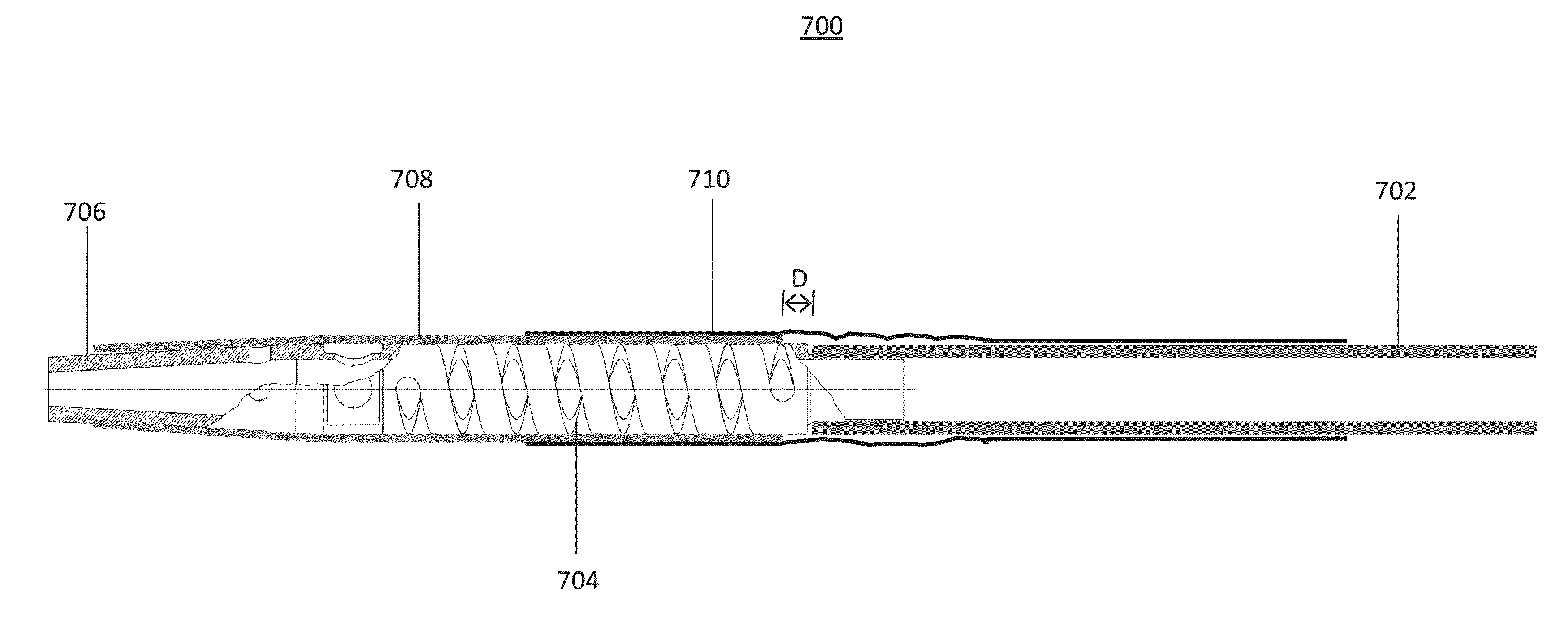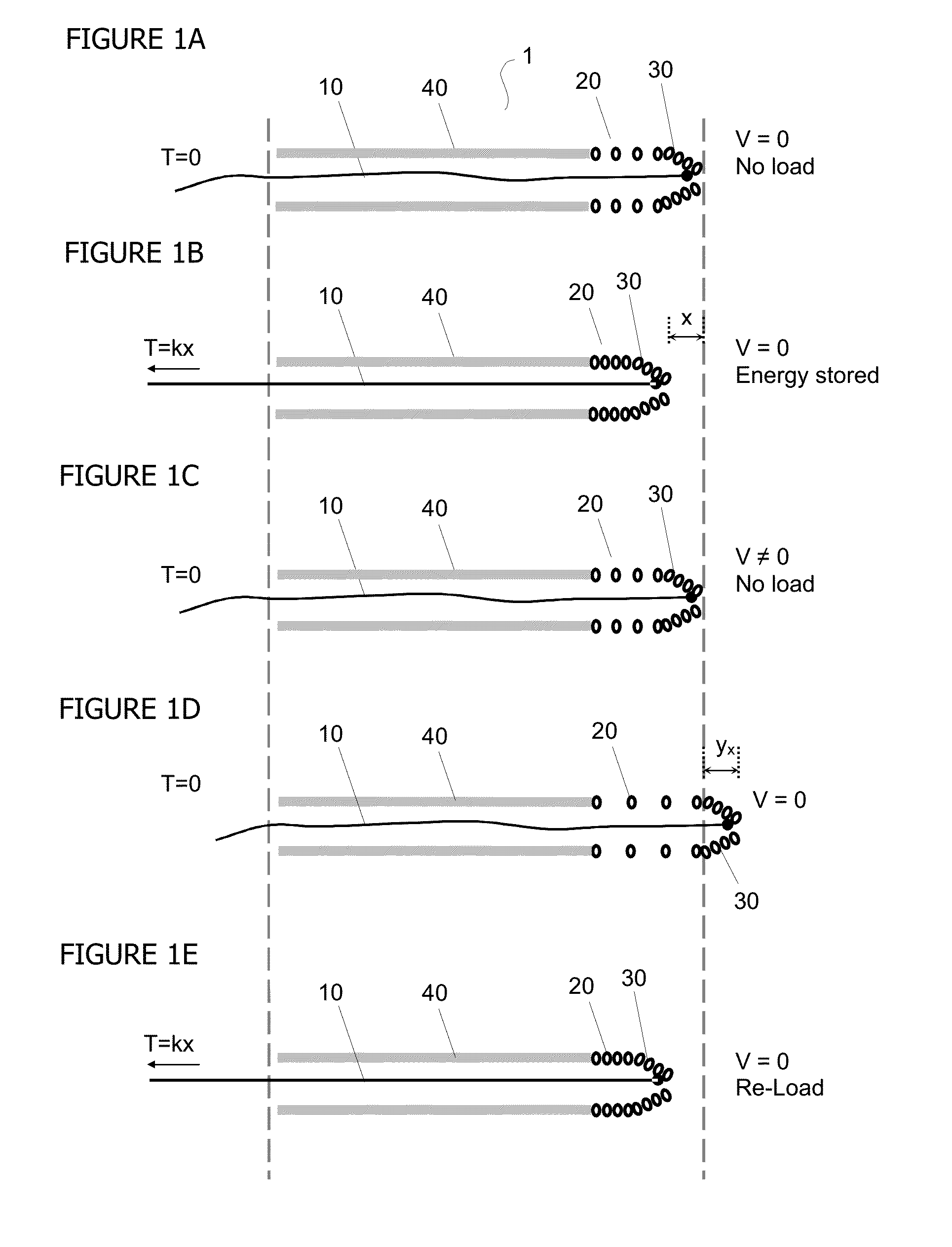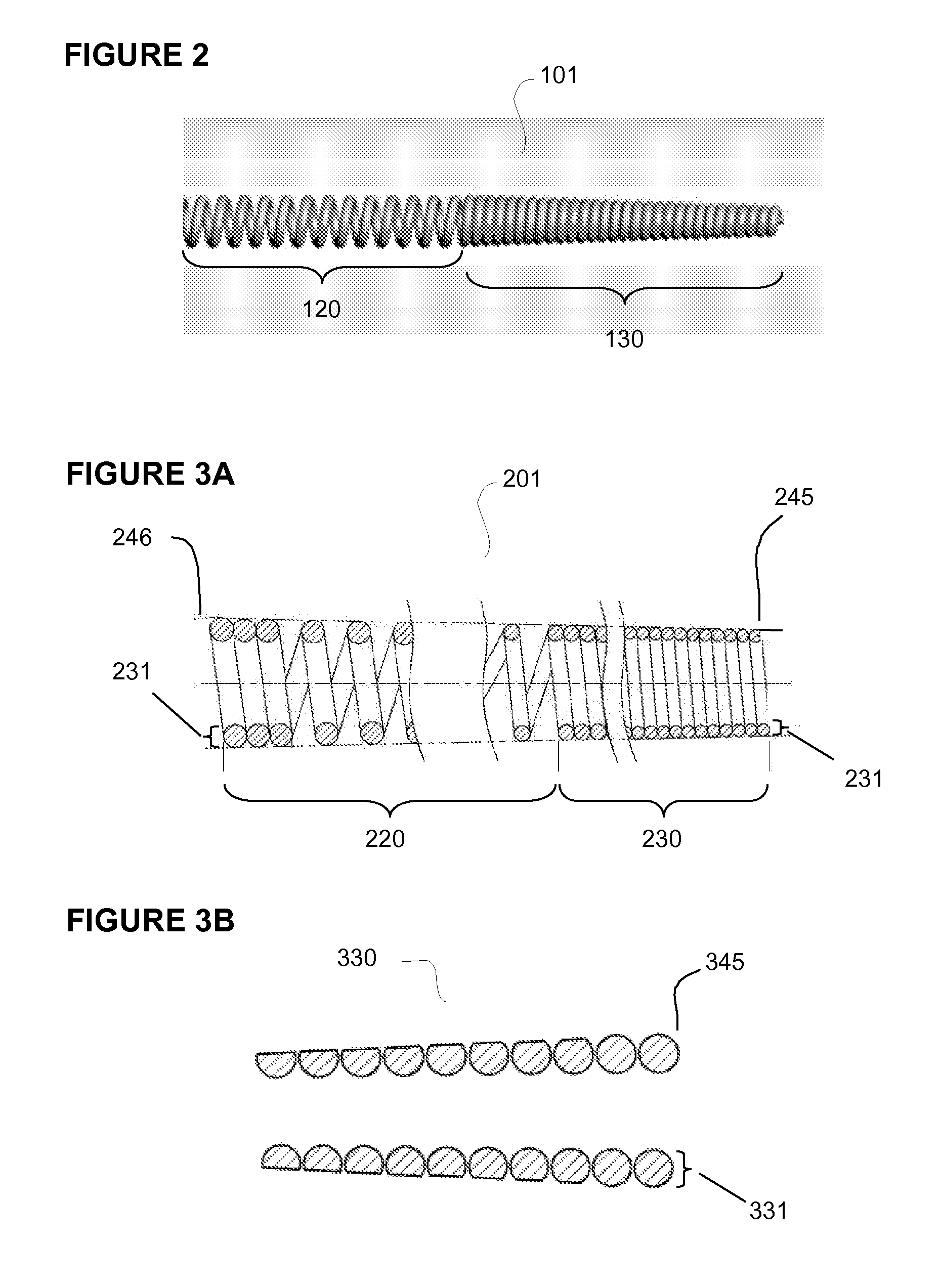Device for Traversing Vessel Occlusions and Method of Use
a technology of occlusion and device, which is applied in the field of energy-efficient devices, can solve the problems of limited success of devices for opening these occlusions, long procedures with potentially adverse effects on patients, and inability to achieve the effect of improving the vibration force of delivery, and reducing the risk of recanalization
- Summary
- Abstract
- Description
- Claims
- Application Information
AI Technical Summary
Benefits of technology
Problems solved by technology
Method used
Image
Examples
Embodiment Construction
[0037]The apparatus, system, and method of the invention provide an improved device and method of oscillating a distal component for re-canalization of a total or partial occlusion in a blood vessel, but may also be applicable to clearing occlusions from other body lumens. The apparatus of the invention includes a catheter having a proximal and distal end, a spring element coupled to the distal end of the catheter, a distal component coupled to a distal end of the spring element, a sleeve covering at least a portion of the spring element, and a pulling member attached to the spring element or distal component and housed in a catheter. The apparatus provides therapeutic vibration in the distal component at the distal end of the catheter, i.e., in the catheter tip. The vibratable distal component may be any structure that is operably affixed to the distal end of the spring element, or may be a part of the spring element itself. Vibration of the distal component is effected via the spr...
PUM
 Login to View More
Login to View More Abstract
Description
Claims
Application Information
 Login to View More
Login to View More - R&D
- Intellectual Property
- Life Sciences
- Materials
- Tech Scout
- Unparalleled Data Quality
- Higher Quality Content
- 60% Fewer Hallucinations
Browse by: Latest US Patents, China's latest patents, Technical Efficacy Thesaurus, Application Domain, Technology Topic, Popular Technical Reports.
© 2025 PatSnap. All rights reserved.Legal|Privacy policy|Modern Slavery Act Transparency Statement|Sitemap|About US| Contact US: help@patsnap.com



